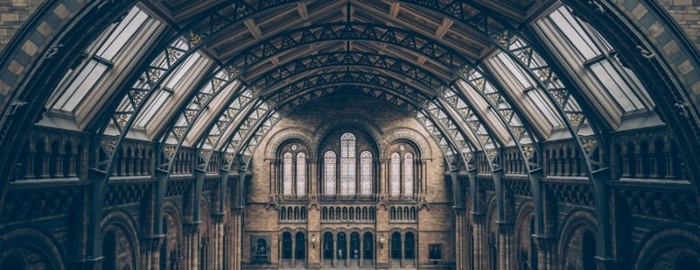How to Harness Architectural Metals' Living Finish for Alluring Design
Those who work with architectural metals understand something that eludes the general populace: metal isn’t a cold, inanimate material.
On the contrary, metal is quite alive.
“ [Copper and its alloys brass and bronze] have become very popular in the last few years... These metals have 'living finishes.' They change and react to their environment, and how they are lived with.” - Eric Cuper, Cuper Studios LLC
Living Finishes for Architectural Metals
All metals - from sheets, to blocks, to formed metal mouldings - have naturally “living” finishes.
Think of a piece of metal like a human being. It requires oxygen to “breathe” (oxidize) and age. The difference is, metal lasts a lot longer without oxygen than we do.
Oxidation is the cause of surface corrosion. Here’s how it works:
- Electrons from the metal’s surface become detached
- The electrons roam through an electrolyte solution (usually moisture in the air)
- They come to rest at a new location on the metal’s surface
- They start their new life as an oxide compound
So why do we want our metals to stay “living”? Wouldn’t we want to slow down or freeze the oxidation process?
For certain applications and aesthetics, oxidation is absolutely undesirable. For structural, food & drink, and medical usage, metals cannot oxidize for safety reasons. Even for structures, some architects prefer the original shiny appearance. In these cases, the metal is preserved with lacquer or coating.
However, aged and tarnished metals are increasingly popular in architectural design. Consumers and businesses love the rustic aesthetic, and architects love the variety of design options they provide.

Types of Living Finishes
Carbon Steel
- Oxidation creates a brown, pitted surface with blotches of iron oxide (rust)
- Surface develops iron oxide dust that can transfer upon touch
- Unlike the patina of red metals, rust does not stop once it starts
Once the metal has rusted to a desired point, a surface protectant can stop the oxidation process and prevent iron oxide transfer.
The oxidized carbon steel aesthetic works well with:
- Reclaimed or weathered wood
- Corrugated metal sheets
- Rough welded steel furniture
- Rustic light fixtures
- Varieties of stone
- Woolly earth-tone fabrics
Galvanized Steel
- Zinc is melted down to create a coating for steel
- Zinc coating protects steel substrate through preferential corrosion (zinc will naturally corrode before steel)
- Spangle crystal size and shape are controlled by size of zinc particles in coating
Galvanized steel goes well with:
- Industrial furnishings
- Plywood
- Braided cable
- Exposed ductwork
- Dark leather
- Primary-colored surfaces
Brass, Bronze, Copper
Red metals undergo the same oxidation process as carbon steel. However, we call it tarnishing, or patina, instead of rust.
Tarnishing:
- Eventually stops its own progression by creating an oxide layer over the metal
- Makes red metals suitable for wet interior applications or outdoor use
- Never happens the same way twice
Tarnishing creates a living, moving, spectacular array of colors and contrasts that draws the eye in like an indelible two-dimensional maze.
Patina creates a wonderful aesthetic with:
- Brick or dark stone
- Wrought iron
- Reclaimed wood
- Countertop edging/backsplash
- Tile transitions
- Glass framing
The "Living Metal" Aesthetic
Living metal finishes take time to grow and develop. A great architect will understand both their limitations and potential. A dynamic material can be hard to control - like a wild stallion or a wayward child - but with patience and expert design, their impact is beyond compare.
You May Also Like
These Related Stories

MeshTrim: Custom Framing for Decorative Wire Mesh

Find Your "Beauty": Aesthetic Architecture With Ornamental Metal




